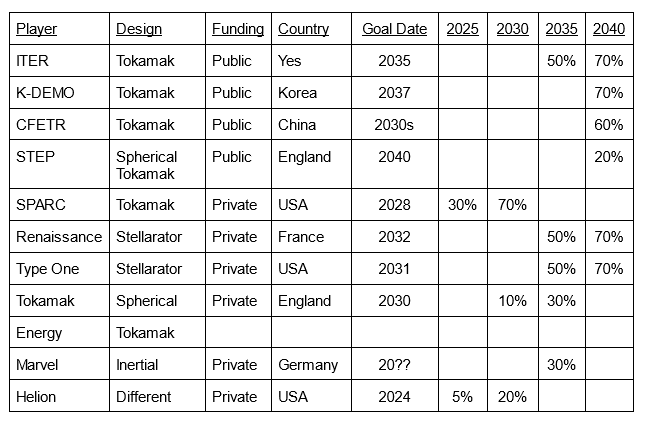This is a linkpost for "The future of fusion" book review.
IMO it's not really a book review, it's a well-written and data-driven argument that commercial fusion power is about 10-15 years away, no really for real this time. (!!!) Good discussion in the comments too. I'm interested to see what people here think. [ETA: the argument is for fusion power in less than 10-15 years; I mentally added a few years and slapped "commercial" on the front, though yeah I admit it could plausibly take longer idk.]
The author's credences/timelines:

I'm going to update my post on what 2040 looks like assuming no singularity accordingly.